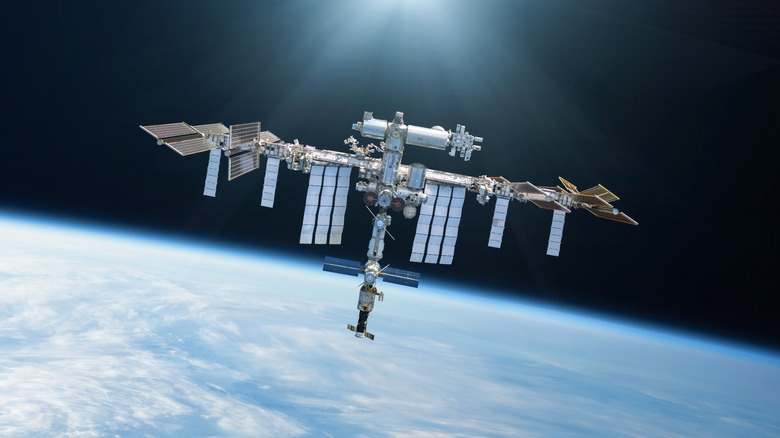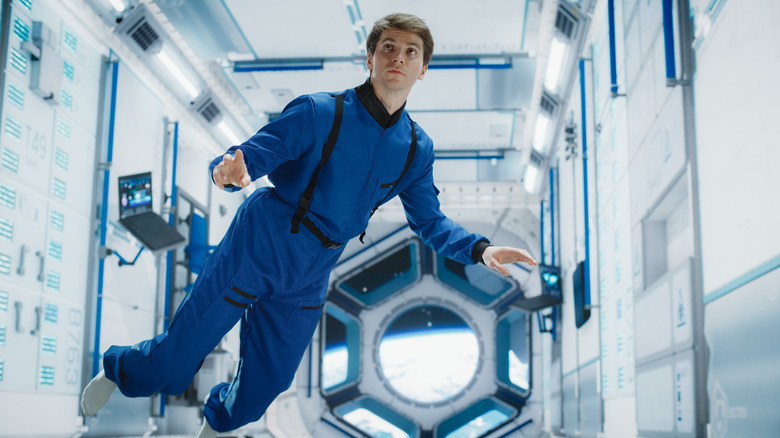How Many People Are There On The International Space Station?
The International Space Station (ISS) is a testament to humanity's ever-expanding cosmic reach, and a great example of multiple countries playing nice together. Developed as a joint effort between the U.S., Canada, Japan, Europe, and Russia, the ISS began construction in 1998, and orbits Earth 16 times per day. Designed for research and habitation, like any workplace, the ISS requires on-board personnel to keep all its systems and tools operating properly. If you've ever wondered how many people are aboard the International Space Station at any given time, the answer is typically around seven.
That number can increase briefly during what's known as a "direct handover," a practice adopted in 2020 to ensure a continuous human presence on the station. During these crew rotations, both the outgoing and incoming teams live on the ISS together for a few days before the departing astronauts return to Earth. Continuously occupied since 2000, the current team of ISS engineers — known as Expedition 73 — has been space-bound since April 19, 2025, with the end of the mission planned for sometime in December 2025.
Where everyone sleeps on the International Space Station
While seven crew members is the standard, NASA notes that the most people ever aboard the ISS at one time is 13 — a milestone that occurred three different times during the Space Shuttle Program, when a shuttle carrying seven astronauts docked with a resident crew of six. The Space Shuttle Program officially concluded in July 2011. A close runner-up for "most humans aboard the ISS" came during NASA's SpaceX Crew-2 mission, when four arriving astronauts joined the station's existing seven-person crew, bringing the total to 11.
Despite the ISS looking like a tangle of solar arrays and scientific instruments from the outside, the interior offers a surprising amount of livable space. Just how big is the International Space Station? In terms of length, it's one yard short of an NFL field. As for living space, there are six sleeping quarters for the crew, two bathrooms, a full exercise gym, and even a 360-degree observation cupola that provides unmatched views of Earth. During a handover, when there are more personnel aboard than sleeping spots, the crew works with flight controllers to locate temporary sleep spaces, which often results in visitors snoozing in modules that experience the least amount of activity.
Life on the International Space Station isn't always smooth sailing
Approaching close to three decades of operating in space, the International Space Station is the largest man-made structure ever put into the cosmos. There have been hundreds of missions involving the multinational hub, including payload initiatives, assembly flights, and numerous crew and supply deliveries. Expedition 1 — the station's first long-term crew of three — arrived at the ISS on October 31, 2000, and returned to Earth in March 2001. Most ISS missions have been successful, but to err is human, and the station has certainly seen its share of problems.
Some of the worst things to ever happen on the ISS include a small puncture in the Soyuz MS-22 spacecraft, which led to a coolant leak in space, and a software glitch with Russia's Nauka science module that resulted in unexpected orientation of the station. Astronauts and other team members must also be aware of exactly what is taken aboard, including items banned on the International Space Station, like carbonated drinks and cookies.


